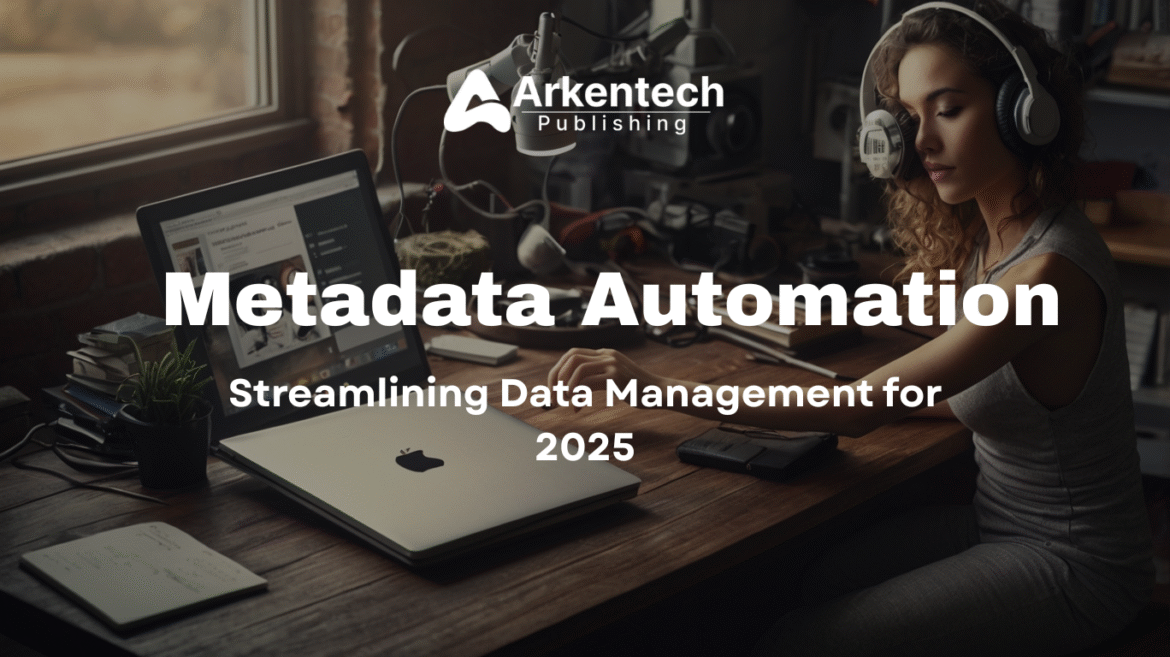Introduction
In today’s digital first world, organizations are overwhelmed by the increasing amount of data, diversity and speed. Effective handling this flow of information is impossible without strong metadata. But the traditional methods for controlling metadata are slow, incorrectly exposed and unstable. This is the place where metadata -automation becomes important.
Matadata -automation helps maintain data integrity, improve traceability and reduce friction in all analysis flow. Since the data complexity grows with multi-cloud setup, real-time streaming and AI-operated ecosystem, automation of metadata processes ensures frequent documentation and reliable management control.
What is Metadata Automation?
Matadata automation refers to the use of AI, machine learning and rule-based engines to automatically generate, classified, update and manage the metadata in the computer system. Matadata describes data – it tells you what the data is, where they came from how they have been processed, and if access is.
Automation of these procedures the manual removes the load, improves stability and accelerates data availability for analyzes, compliance and operating use.
Why Metadata Automation Matters in 2025
With the explosion of cloud computing, hybrid data environments, and AI-driven analytics, enterprises face a serious metadata management challenge. Static, manual metadata repositories simply can’t keep up.
Here’s why Metadata Automation is crucial now more than ever:
1. Enables Scalable Data Governance
Organizations deal with thousands of data sources. The automation ensures that each data property is tagged and tracked evenly, which enables spontaneous control. This is especially important for compliance with regulations (GDPR, HIPAA, etc.) where data line and audit paths are non-parasi
2. Improves Data Discovery and Accessibility
Automatic metadata enriches data directories with consistent details, classifications and conditions – users find and understand the right data faster. This improves productivity and enables self -service analysis in commercial teams.
3. Supports AI and Machine Learning Pipelines
Dynamic high -quality dynamic metadata is fundamental to training effective AI models. Metadata Automation ensures that data sets well, current and detectable models increase the accuracy and explanation.
4. Reduces Operational Overhead
Manual metadata entry is resource intensive. Eliminating automation errors, leading to low costs and high data integrity, reduces human efforts.
Key Use Cases for Metadata Automation
Let’s see how the business uses Matadata Automation today:
- Data intake Pipeline: Metadata marking automatically under ETL procedures to maintain dynasty and quality.
- Data Cataloging Tools: To enrich the property in real time, as they allow rapid discovery and professional understanding.
- Compliance audit: Creating a dynamic descent and access log without manual intervention, significantly reduces the time for audit preparation.
- Professional vocabulary: Keeping definitions to match departments using AI-related cement mapping that is consistent with organizational classification.
In addition, Metadata Automation supports automation in real -time operating alerts, personal access control and dynamic classification of sensitive data, increasing both compliance and security.
Top Tools Driving Metadata Automation
Many modern platforms and computer solutions support Metadata Automation out of the box:
- Choice: Machidata combines machine learning with human response to increase quality.
- Atlan: Matadata is automatically thrown out and is automatically integrated with data pipelines.
- CollaiBRA: Provides active metado control automation for control.
- Informatica EDC: Scan the data sources and automatically removes metadata for compliance and analysis.
These devices benefit from Metadata Automation to provide real, active metadata systems that correspond to the requirements for modern data architecture.
Challenges to Consider
Despite the benefits, metadata is not without automation barriers:
- Tool integration can be complicated in inheritance and cloud systems, especially when quiet infrastructure and old formats are treated.
- Relevant accuracy is a challenge – AI can miss data without reference to the business, which causes inadequate metadata application or poor reconciliation.
- Change management is important. Teams require training to rely and explain the automatic metadata system and adapt new workflakes and tools.
Organizations should also address data quality at the source, maintain the AI model used for metadata tagging and promoting cross-paired cooperation to make metadata automation really effective and durable.
Final Thoughts
Metadata Automation is not just a technological upgrade – this is a strategic imperative in 2025. This converts metadata into an active promoter of control, detection, AI and operational efficiency from a passive data description.
When organizations are moving towards data surgery decisions, automation of metadata will be important to increase insights, maintain compliance and remain competitive in the data -designed world.
Start a scale from there by automating metadata in your highest affected data and use modern equipment and control structure. Roi will be immediate – like better decisions, quick access and smart operations.
pin.it pin.it pin.it pin.it pin.it pin.it ghostblogge22.blogspot.com
